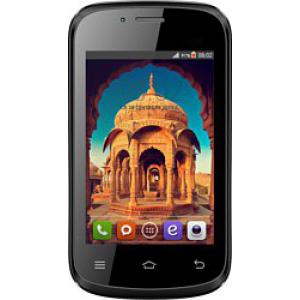Flash firmware on BQ BQS-3503 Bombay
Mobiles >> BQ >> BQ BQS-3503 Bombay| Specifications | Reviews | Secret codes |
| Unlock phone | Root phone |
| Backup | Flash Firmware | Screenshot |
How to flash BQ BQS-3503 Bombay?
Why reinstall the firmware?
Errors in the operation of the Android OS begin to appear.
Some applications stop opening.
Many applications from the Play Market do not start.
The phone restarts for no reason.
The phone started to work slowly.
You want to update your firmware.
Where can I find the firmware?
On the official Internet resource of the phone manufacturer.
On specialized services on which various developers lay out custom or official OS.
What should be done before installing the firmware?
Back up your phone's user data.
Insert SD card. An SD card is needed to write firmware to it.
Remember your smartphone model.
Charge your phone fully.
Download Firmware and Place it on the SD card.
Installing TWRP Recovery
Download the Official TWRP App from the Play Market. And install it.
When you start the application for the first time, you must agree to install the firmware, as well as agree to grant the application Superuser rights and click the 'OK' button.
After moving to the next screen, select the 'TWRP FLASH' item and provide the application with root rights.

On the main screen of the application, select 'Select Device', and find your phone model.
After selecting the phone, the application will redirect the user to a web page to download the modified recovery environment image file. Download the proposed *.img file.
When the file is loaded, you need to return to the main screen of the Official TWRP App and press the 'Select a file to flash' button. Select the file downloaded in the previous step.
Click the 'FLASH TO RECOVERY' button and confirm your choice, click 'OK' in the question window.
When the message 'Flash Completed Succsessfuly!' appears. Click 'OK'. The TWRP installation procedure is now complete.
Transfer the firmware and other necessary files to the SD card.
Insert a memory card into the phone.
To reboot into recovery, you need to use a special item in the Official TWRP App menu, accessible by pressing the button with three stripes in the upper left corner of the main screen of the application. We open the menu, select the 'Reboot' item, and then click on the 'REBOOT RECOVERY' button. The phone will reboot into the recovery environment automatically.
Firmware via TWRP

Before flashing, you need to delete all user data from the phone, this will avoid many problems. press 'WIPE' on the home screen.
Now you can start flashing. Press the 'Install' button.

The file selection screen appears. At the very top is the 'Storage' button, select the location where the firmware file is located.
Select the storage to which the files were copied. Press the OK button.

Select the firmware file and click on it. A screen opens with a warning about possible negative consequences, as well as the item 'Zip signature verification'. This item should be checked by placing a cross in the check-box, which will avoid using damaged files when writing to the phone's memory sections.
The procedure for flashing the phone will begin, accompanied by the appearance of inscriptions in the log field and the movement of the progress bar.
The completion of the firmware installation procedure is indicated by the inscription 'Successful'.
Summary: Type: smartphone; Band: GSM 900, GSM 1800, GSM 1900; Platform: Android; Smart Phone OS: Android 2.3; Processor: Spreadtrum SC6820; Number of processor cores: 1; GPU: Mali-400; RAM: 256 Mb; Internal RAM: 0.5 GB; Memory Card Slot: yes; Memory card support: microSD (TransFlash), micro SDHC; The maximum amount of memory card: 32 GB; Year of issue: 2015; Dimensions (WxHxT): 115.3x63x10.7x99 mm; Enclosure type: classic; Housing material: plastic; The number of SIM-cards: 2; SIM: Mini-SIM; Fingerprint: no; Water resistant: no; Shock-resistant enclosure: no; Color screen: yes; Curved screen: no; Screen type: TFT; Screen Size: 3.5; Resolution: 320x480 px; Touch screen: yes; ...
Comments, questions and answers on the flash firmware BQ BQS-3503 Bombay
Ask a question about BQ BQS-3503 Bombay




